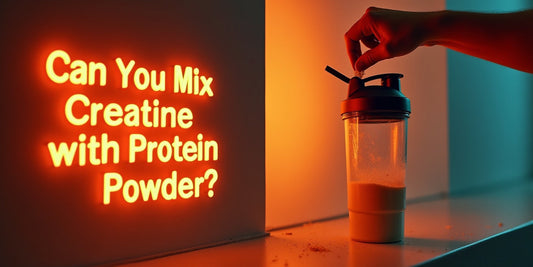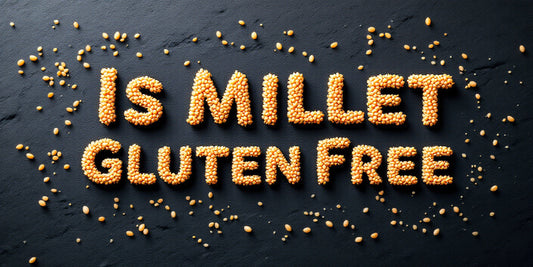

High-Fat Post-Exercise Meals May Disrupt Anabolic Signalling in Muscle
Table of Contents
You just trained a grueling high volume leg workout and your spent, sweaty, and ravenous. You had one of those epic workouts, so you need to refuel your body, so it’s pizza time. The late Sergio Oliva was famous for swigging Coca-Cola and eating pizza after exercise. This may have worked for an Olympian like Sergio, but having a high fat meal post exercise may not be the best post-workout meal for muscle growth. It’s been well documented that eating carbs is essential for post-exercise glycogen replacement and recovery. Any athlete on a low carb diet knows that recuperation time is blunted on low carb diets which can lead to a decrease in performance. If your training hard, then low carb is going to affect your recovery. The post-exercise period is widely considered the most critical part of nutrient timing. Theoretically, consuming the proper ratio of nutrients post-exercise not only initiates the rebuilding of damaged muscle tissue and restoration of energy reserves.
There is evidence that glycogen from carbohydrate-rich diets serves to mediate anabolic intracellular signaling post-exercise. This appears to be due, at least in part, to its negative regulatory effects on AMP-activated protein kinase (AMPK). AMPK is turned on when the cellular energy state of the cell drops. When cellular energy states drop, it makes sense that this is not the ideal state for muscle growth. High levels of glycogen inactivate AMPK (i.e. Send a message to the cell that energy levels are full) and lowered levels of glycogen activate it (Send a message to the cell that energy levels are depleted). AMPK activation (low cellular energy) has been shown to suppress protein synthesis by downregulating another molecular target called the mTOR pathway which is heavily involved in protein synthesis. mTOR is considered a master network in the regulation of skeletal muscle growth, and its inhibition of mTOR has an adverse effect on anabolic processes and muscle growth.
Glycogen inhibition by eating a low carb diet has been shown to blunt muscle growth. Low glycogen availability also has been demonstrated to increase muscle protein breakdown. A previous study found that protein losses more than doubled following a bout of exercise in a glycogen-depleted versus glycogen-loaded state. Other researchers have displayed a similar inverse relationship between glycogen levels and muscle protein breakdown. Considering the evidence, maintaining a high intramuscular glycogen content at the onset of training appears beneficial to desired resistance training outcomes for muscle growth.
High Fat Post-Exercise May Blunt Anabolic Signaling
Post-exercise fat intake is less studied, and there is not much research on the effects of a high-fat diet on post-exercise anabolic signaling pathways. One would suspect that post-exercise fat intake would be anabolic, but new research published in Medicine in Sports and Science in Exercise may blunt the anabolic responses to exercise.
Researchers examined how high-fat diets affected the anabolic signaling protein p70S6K which, in muscle, acts like a supervisor controlling the process of muscle building. For example, the combination of resistance exercise and consuming whey protein produces a two-fold increase in the activity of the protein, p-70S6K1. In simple terms, p-70S6K1 is an important muscle growth factor. When leucine is administered after intense resistance exercise, it results in increased p70S6K.
Researchers examine the effects of reduced carbohydrate and high post-exercise fat availability on cell signaling and expression of genes regulating muscle protein synthesis. Subject’s exercised under different but similar caloric dietary in the post-exercise conditions consisting of:
-High Carbohydrate Diet/Low Fat (10 grams of Carbohydrate, 2.5 grams of protein and 0.8 Fat grams per kg per day) or
-A Low Carb/ High Fat Diet- in the post-exercise recovery periods (2.5 grams of Carbohydrate, 2.5 grams of protein and 3.5 Fat grams per kg of bodyweight).
At the end of the study, muscle glycogen was lower at 3 and 15 hours in the post-high-fat condition compared to high carbohydrate condition. This is to be expected following high intense exercise with a low carb diet. The fat burning genes for increased after the high-fat meal compared to the high carbohydrate meal. The fat burning genes PDK4, CD36, and CPT1 mRNA were greater in the high fat diet in the recovery period from steady state exercise compared with high carbohydrate diet. Again this has shown before as one of the adaptations to a high-fat diet is that the metabolic machinery for fat burning is increased. The BIG surprise was that the anabolic signaling pathway, p70S6K activity was higher at 3 hours post-steady state exercise in high carbohydrate versus high-fat diet. The Post-exercise high fat feeding does increase fat genes for increased fat oxidation. However, post-exercise p70S6K1 activity is reduced under conditions of high fat feeding thus potentially impairing skeletal muscle remodeling processes.
Key Points:
High Fat Meal Post Exercise may decrease anabolic signaling pathway, but it does seem to increases genes for fat oxidation.
Hammond KM, Impey SG, Currell K, Mitchell N, Shepherd SO, Jeromson S, Hawley JA, Close GL, Hamilton DL, Sharples AP, Morton JP. Postexercise High-Fat Feeding Supresses p70S6K1 Activity in Human Skeletal Muscle. Med Sci Sports Exerc. 2016 Jun 20.
Kim, E.; Goraksha-Hicks, P.; Li, L.; Neufeld, T.P.; Guan, K.L. Regulation of TORC1 by Rag GTPases in nutrient response. Nat. Cell Biol. 2008, 10, 935–945.
Drummond, M.J.; Fry, C.S.; Glynn, E.L.; Timmerman, K.L.; Dickinson, J.M.; Walker, D.K.; Gundermann, D.M.; Volpi, E.; Rasmussen, B.B. Skeletal muscle amino acid transporter expression is increased in young and older adults following resistance exercise. J. Appl. Physiol. 2011, 111, 135–142.
Kim, E.; Goraksha-Hicks, P.; Li, L.; Neufeld, T.P.; Guan, K.L. Regulation of TORC1 by Rag GTPases in nutrient response. Nat. Cell Biol. 2008, 10, 935–945.
Drummond, M.J.; Fry, C.S.; Glynn, E.L.; Timmerman, K.L.; Dickinson, J.M.; Walker, D.K.; Gundermann, D.M.; Volpi, E.; Rasmussen, B.B. Skeletal muscle amino acid transporter expression is increased in young and older adults following resistance exercise. J. Appl. Physiol. 2011, 111, 135–142.
Drummond, M.J.; Glynn, E.L.; Fry, C.S.; Timmerman, K.L.; Volpi, E.; Rasmussen, B.B. An increase in essential amino acid availability upregulates amino acid transporter expression in human skeletal muscle. Am. J. Physiol. Endocrinol. Metab. 2010, 298, E1011–E1018.
Churchward-Venne, T.A.; Burd, N.A.; Mitchell, C.J.; West, D.W.; Philp, A.; Marcotte, G.R.; Baker, S.K.; Baar, K.; Phillips, S.M. Supplementation of a suboptimal protein dose with leucine or essential amino acids: Effects on myofibrillar protein synthesis at rest and following resistance exercise in men. J. Physiol. 2012, 590, 2751–2765.
Goldberg, A.L.; Etlinger, J.D.; Goldspink, D.F.; Jablecki, C. Mechanism of work-induced hypertrophy of skeletal muscle. Med. Sci. Sports 1975, 7, 185–198.
Mitchell, C.J.; Churchward-Venne, T.A.; West, D.D.; Burd, N.A.; Breen, L.; Baker, S.K.; Phillips, S.M. Resistance exercise load does not determine training-mediated hypertrophic gains in young men. J. Appl. Physiol. 2012, doi:10.1152/japplphysiol.00307.2012.
Burd, N.A.; Holwerda, A.M.; Selby, K.C.; West, D.W.; Staples, A.W.; Cain, N.E.; Cashaback, J.G.; Potvin, J.R.; Baker, S.K.; Phillips, S.M. Resistance exercise volume affects myofibrillar protein synthesis and anabolic signalling molecule phosphorylation in young men. J. Physiol. 2010, 588, 3119–3130.
Burd, N.A.; West, D.W.; Staples, A.W.; Atherton, P.J.; Baker, J.M.; Moore, D.R.; Holwerda, A.M.; Parise, G.; Rennie, M.J.; Baker, S.K.; et al. Low-load high volume resistance exercise stimulates muscle protein synthesis more than high-load low volume resistance exercise in young men. PLoS One 2010, 5, e12033.
Burd, N.A.; Andrews, R.J.; West, D.W.; Little, J.P.; Cochran, A.J.; Hector, A.J.; Cashaback, J.G.; Gibala, M.J.; Potvin, J.R.; Baker, S.K.; et al. Muscle time under tension during resistance exercise stimulates differential muscle protein sub-fractional synthetic responses in men. J. Physiol. 2012, 590, 351–362.
Shepstone, T.N.; Tang, J.E.; Dallaire, S.; Schuenke, M.D.; Staron, R.S.; Phillips, S.M. Short-term high- vs. low-velocity isokinetic lengthening training results in greater hypertrophy of the elbow flexors in young men. J. Appl. Physiol. 2005, 98, 1768–1776.

















